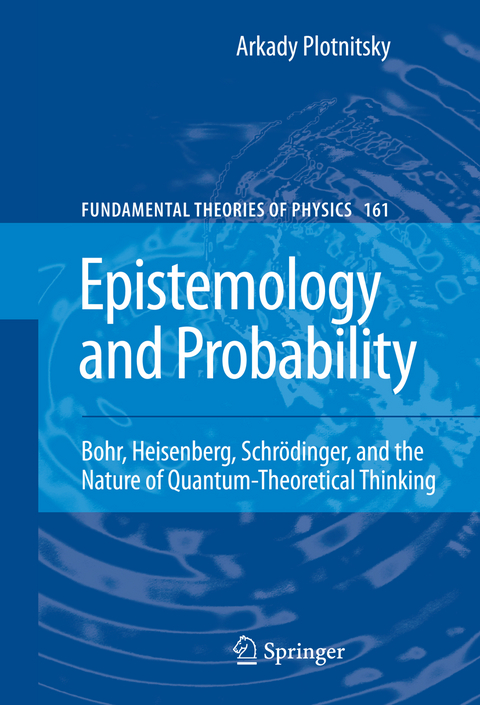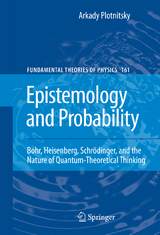Epistemology and Probability
Springer-Verlag New York Inc.
978-0-387-85333-8 (ISBN)
Introduction—Epistemology and Probability in Quantum Theory: Physics, Mathematics, and Philosophy.- Quantum Phenomena and the Double-Slit Experiment.- Heisenberg’s Revolutions: New Kinematics, New Mathematics, and New Philosophy.- From Geometry to Algebra in Physics, with Heisenberg.- Schrödinger’s Waves: Propagation and Probability.- Bohr’s Como Argument: Complementarity and the Problem of Causality.- From Como to Copenhagen: Renunciations.- Can Quantum-Mechanical Description of Physical Reality Be Considered both Complete and Local?.- Essential Ambiguity and Essential Influence: Reading Bohr’s Reply to EPR.- Mysteries Without Mysticism, Correlations Without Correlata, Epistemology Without Ontology, and Probability Without Causality.- 11 Conclusion: “The Mere Touch of Cold Philosophy”.
| Erscheint lt. Verlag | 5.11.2009 |
|---|---|
| Reihe/Serie | Fundamental Theories of Physics ; 161 |
| Zusatzinfo | 2 Illustrations, black and white; XXXIV, 402 p. 2 illus. |
| Verlagsort | New York, NY |
| Sprache | englisch |
| Maße | 155 x 235 mm |
| Themenwelt | Mathematik / Informatik ► Mathematik ► Wahrscheinlichkeit / Kombinatorik |
| Naturwissenschaften ► Physik / Astronomie ► Astronomie / Astrophysik | |
| Naturwissenschaften ► Physik / Astronomie ► Atom- / Kern- / Molekularphysik | |
| Naturwissenschaften ► Physik / Astronomie ► Hochenergiephysik / Teilchenphysik | |
| Naturwissenschaften ► Physik / Astronomie ► Quantenphysik | |
| Naturwissenschaften ► Physik / Astronomie ► Theoretische Physik | |
| ISBN-10 | 0-387-85333-2 / 0387853332 |
| ISBN-13 | 978-0-387-85333-8 / 9780387853338 |
| Zustand | Neuware |
| Haben Sie eine Frage zum Produkt? |
aus dem Bereich




